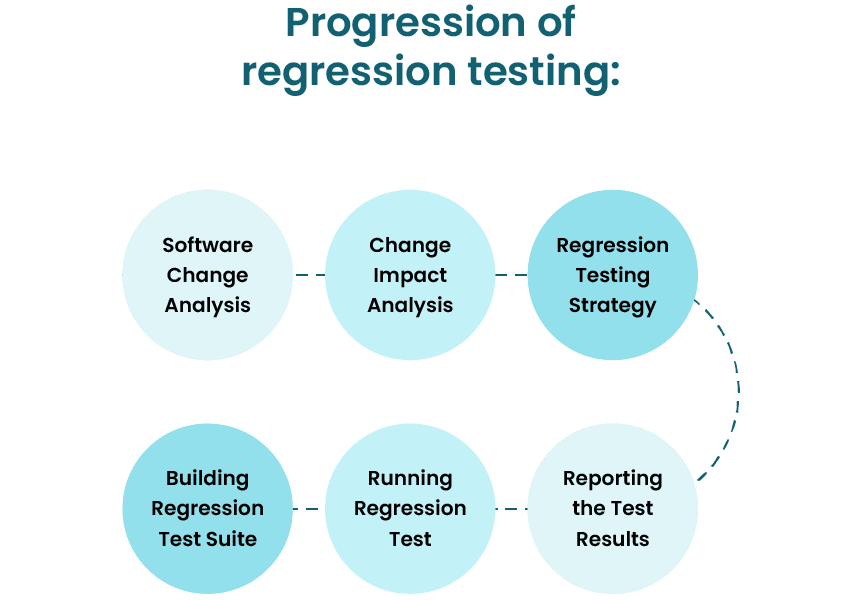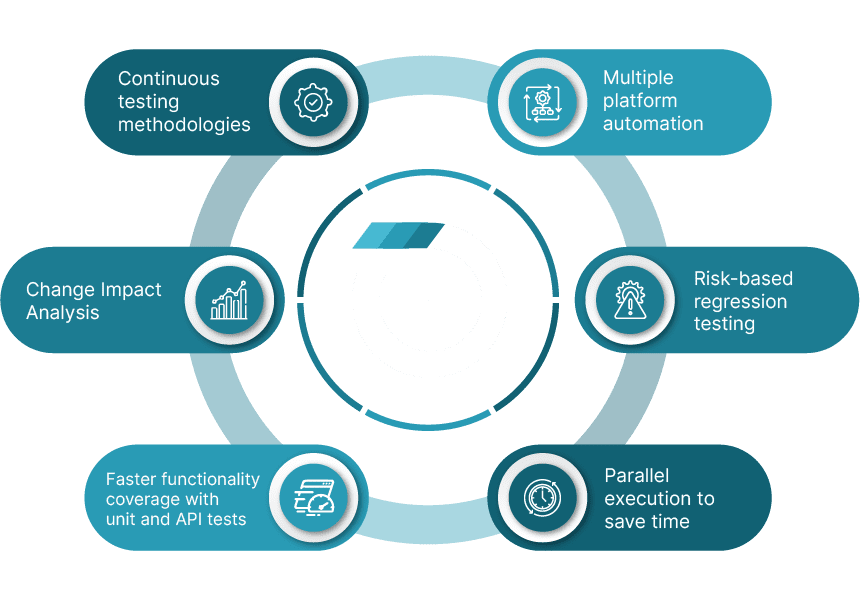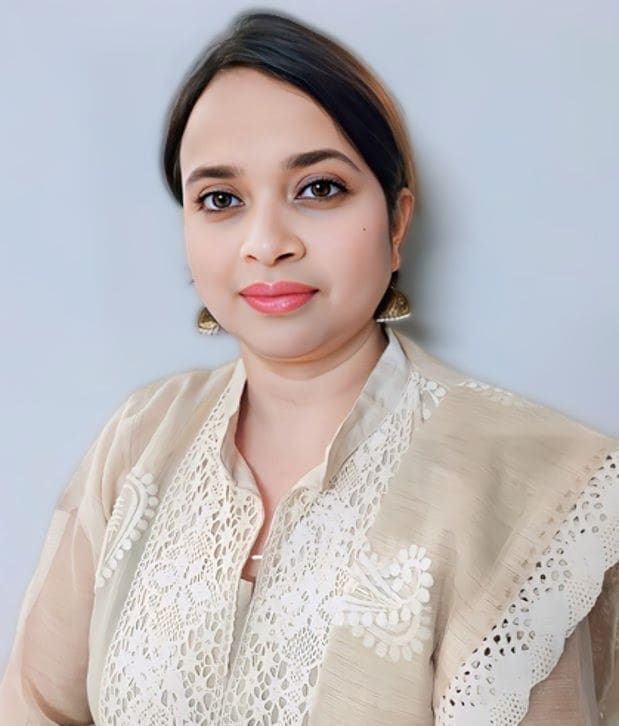Regression testing is one of the most common types of testing in software development. It requires going back, or “regressing,” to existing code and ensuring it isn’t negatively affected whenever new functionality, features, or updates are added. Said another way, regression testing ensures that everything still functions as expected after a change is introduced to an application.
Regression testing is the only process to find out whether the updates or changes had caused new defects in the existing functions. This step would assure software unification. In a normal software development pipeline, retesting comes before regression testing procedures. This type of testing is especially important in ERP applications due to the frequency of regular updates.
In this blog post, we’re covering the most frequently asked questions about regression testing, including why it should be automated and exactly how Opkey handles regression testing automation.
What Is Regression Testing in Software Development?
Regression testing is an essential type of Software testing. It is the process of evaluating already-released software to ensure that no functionality has been broken as a result of any change or modification. Overall stability and functionality of current features are ensured by corrective regression testing.
Achieve Faster, Smarter Testing with Opkey’s AI-Enabled Regression Testing

What Are the Different Types of Regression Testing?
There are seven different types of regression testing:
- Corrective testing: It is the simplest type of regression testing. It is used to test existing functionality when no changes have been made to the original source code.
- Re-test all: This type of Software testing technique reruns all test cases whenever changes are made to an application’s existing code, such as a major software update or a re-platform.
- Selective regression testing: This type of regression testing “selects” just certain parts of an application to test the impact of new code on existing code.
- Progressive regression testing: This regression testing is performed when new features are added to ensure existing code is not affected.
- Complete regression testing: This is comprehensive testing that is typically performed during the final deployment phase of a project just prior to release.
- Partial regression testing: It takes place when changes are made to the source code to verify that the application is still performing as expected.
- Unit regression testing: This type of testing isolates specific pieces of code to test so that any dependencies on that code are not affected.
Read our blog: Types of Regression Testing,” to get more information on different types of regression testing and the ideal scenarios to use them.
Is Regression Testing Part of UAT?
User Acceptance Testing (UAT) is the final stage of the software testing process. However, regression testing is not actually part of UAT testing. It should be performed before user acceptance testing to reduce the risk of poor user acceptance.
What is the Regression Test Suite?
The regression test suite is a set of already created test cases that confirm the functionality of the product. In the quality assurance process, this can span from unit tests, functional tests to integration tests.
What are the Regression Testing techniques?
Continuous software maintenance encompasses a wide range of activities such as modifications, error correction, optimization, etc.

- Re-test All: All tests in the current test bucket should be executed again. This is quite expensive because it takes a lot of time and resources.
- Regression test selection: Run the selected portion of test suites, such as reusable or obsolete test cases.
- Prioritization of test cases: Prioritization of test cases is based on business impact and used functionality.
If you’re confused between retesting and regression testing, this blog is for you: The difference between retesting and regression testing
When Should You Perform Regression Testing?
You can perform regression testing at any stage of the software development lifecycle. However, regression testing process must be carried out in the following scenarios:
- When adding a new feature or functionality: Introducing new features or functionality can negatively affect the current application and pre-existing integrations and customizations.
- When changes are made to the existing application: Even small tweaks or modifications can wreak havoc on overall functionality. Changes such as adding a new field or minor workflow adjustments can trigger the need to run regression tests.
- When integrating with other applications: New integrations with third-party applications require code changes that can break or disrupt previous functionality.
- When there is a software update: Continuous regression testing is required for regular software updates, such as those released by ERP suppliers, to ensure that previous functionality is not impacted by newer update..
- When there are performance issues: Even if no system modifications have been made, executing regression tests is still a good idea. Whenever you’re experiencing performance issues, it can usually pinpoint the problem areas that are causing performance issues.
Read more: Workday Regression Testing: Why It Matters
How Do You Improve Regression Testing?
Effective regression testing strategies involve proper planning and selecting the right regression testing tools. Creating the perfect regression test suite involves the following steps:
- Collecting all expected regression tests and monitoring changes carefully
- Prioritizing regression tests and calculating the time needed to run them
- Analyzing the changes and their impacts on various components
- Identifying the areas that are more vulnerable to risks and failures
- Updating the regression tests guarantees that the test suite is up to date with the most current changes introduced in the application.
- Encouraging teams to perform regression testing within defined intervals of time to ensure that the application continues functioning properly
Best practices that can make regression testing more effective and efficient: How to improve regression testing
What Is ERP Regression Testing?
Enterprise Resource Planning (ERP) regression testing is simply doing regression testing on a packaged application such as Oracle, SAP, Salesforce, or Workday. In general, functional testing is performed during the initial ERP implementation, but as your application grows, various regression testing techniques must be employed. ERPs migrate to the cloud, along with critical ERP integrations. You’ll have to cope with frequent updates and you’ll now need to perform regression tests to get the most out of your ERP system.
However, regression testing is also recommended post-launch whenever new features or integrations with third-party applications are added.
Regression testing is marked out as an obvious choice for automation in the Capgemini World Quality Report from 2021/22, although it is estimated that only 15-20% of regression testing is really automated.
SAP regression testing best practices are covered in this blog: SAP Regression Testing: Why It Matters
What Are the Benefits of Automated Regression Testing?
Regression testing is typically performed by QA teams and, in some cases, business users. The sheer volume of application changes makes regular regression testing challenging, especially when enlisting the help of non-technical business users. You must automate regression testing to keep development schedules on-time and under-budget.
The benefits of automated regression testing have been thoroughly covered in our blog post, “Why Automated Regression Testing is Key to ERP Success.”
Of course, regression testing gets the most use whenever ERP vendors roll out their latest update, which is happening on a much more frequent basis these days. Struggling to keep up with so many updates is one of the main reasons organizations decide to implement automated regression testing. With complex ERP integrations and customizations, manual regression testing is simply overwhelming. Most businesses can’t afford to hire more testers to handle the increased workload. This is why automated regression testing makes sense.
To know more about ERP regression testing, read our blog: Salesforce Regression Testing: Why it Matters
Here are just some of the key benefits that test automation provides with regards to regression testing:
- Automated regression testing eliminates menial, repetitive tasks. The regression test suites expand each time you add new features. It becomes challenging to run the full regression suite within a short timeframe, such as the two-week timeline given by Oracle for its updates. Automation empowers teams to run their full suite of regression tests in a shorter amount of time, and frees users from monotonous, boring work.
- Automating regression tests helps you improve application stability & performance. As ERP applications become more complex with each update, manual regression testing techniques become more prone to human errors. Automation helps reduce the possibility of human error, resulting in a much more stable application.
- Automated regression testing is built for scale: Automated regression tests, once created, can be used over and over again in the future, eliminating the need to re-create them multiple times. Additionally, automated regression test cases can be run all day, at any time of day, unlike human, manual testers.
- The regression testing process, which is automated, provides greater coverage. Knowing what to test, when to test, and how often to test can be challenging when done manually. Intelligent test automation platforms leverage the power of AI to perform a deep dive into your business processes to help you identify which business processes need the most testing, helping you quickly achieve optimal coverage.
Learn More: 10 Regression Testing Best Practices
How Does Opkey Streamline Regression Testing?
Opkey’s AI-powered test automation platform helps customers reduce the costs, effort, and timeliness of their regression testing.

Here’s how we do it:
- Our no-code test creation capability transforms manual test cases into automated test cases with one click, allowing non-technical users to intuitively build automated regression tests through a drag-and-drop interface. Any employee, not just technical ones, can quickly create automated regression tests.
- Our pre-built test accelerator repository contains more than 30,000 automated test cases for more than 12 ERPs. This instantly increases your regression test coverage from day one.
- Our change impact analysis report gives a detailed view of how an ERP update will impact business flows and recommends and prioritizes specific regression test cases.
- Our self-healing script technology diagnoses why tests fail, and enables users to fix broken tests with one click. This reduces test maintenance efforts by over 80%, and speeds up the entire development and testing process.
- End-to-end testing ensures all ERP integrations and customizations perform as expected after each application change, update, or release.
If you are looking for a solution to easily automate your Oracle regression test scripts, read our latest blog post on “High Level Guide to Oracle Cloud Regression Testing.”
Regression testing with Opkey
Opkey is a specialized regression testing tool. We’ve guided companies like Just Group, a leading Australian fashion and apparel retailer. The Just Group struggled to perform regression testing for seven different fashion labels and fourteen web applications. They made the switch to Opkey and reduced regression testing cycle times by 68% and achieved optimal test coverage.
Your test coverage.. Assured.
Happy testing!
Frequently Asked Questions
Regression testing is the process of re-testing an application’s existing features and functionalities whenever new code is added, modified, or removed. This type of testing can be performed manually or by automating a set of specific test scripts. Some issues may demand the highest level of accuracy and productivity, which can only be achieved with automation. Other defects can be impossible to address without human critical thinking and manual testing. Finding the ideal balance between the two strategies is essential for efficient and successful regression validation.
Regression testing can be performed manually or by automating a set of specific test scripts. Certain issues demand the highest level of accuracy and productivity, which can only be achieved with automated testing. Manual testing is appropriate for problems that require a human’s critical thinking skills. Finding the ideal balance between the two strategies is essential for efficient and successful regression testing.
Effective regression testing strategies involve proper planning, diligent work, and the selection of the right automation tool. Creating the perfect regression test cases/suite involves the following steps:
- Collect all the expected test cases and monitor changes carefully.
- Prioritize the test cases and calculate the time needed to run them.
- Analyze the changes and their impacts on various components.
- Identify the areas that are more vulnerable to risks and failures.
Regression testing includes evaluating already-released software to ensure that no functionality has been broken as a result of any change/modification. Overall stability and functionality of current features are ensured by corrective regression testing.
The regression test suite is a set of already created regression test cases that confirm the functionality of the product. In the quality assurance process, this can span from unit tests to integration tests.
UAT is the final stage of the software testing process. However, regression is not actually part of UAT testing. Regression test cases are basically a subset of functional tests created to perform functional testing after any code modification. It should be performed before user acceptance testing to reduce the risk of poor user acceptance.
If you have software that is frequently changed or modified, your regression testing costs will rise. Manual execution of test cases increases both the time and cost of test execution in this situation. In such cases, you must employ automated tools for regression validation.
There are various regression testing tools available that can aid with test execution and minimize execution time and cost. The following is a list of the most important regression testing tools for both functional and regression testing:
- Opkey
- Selenium
- Winrunner
- QTP
- AdventNet QEngine
- Regression Tester
- vTest
- Watir
- actiWate
Regression testing is the process of re-running both functional and non-functional regression tests to ensure that a code modification or new program has not impacted the software’s existing features and functionality.
Regression testing example
A website includes a function that allows you to post images in JPEG and PNG formats, however, there is a fault that causes one of the formats to fail to upload. When a developer patches this defect, he or she must run regression tests to check that the fix hasn’t damaged the other features involved in the image-uploading process.
The following actions could be taken to start regression testing:
- Baseline testing: To create a baseline of expected behavior, a set of test cases is run on the current version of the application.
- Code changes: The development team executes the regression tests to check the updated code and functionality.
- Regression test selection: Test cases for the impacted regions ensure that the existing functionality continues to perform as intended even after code modifications.
- Test execution: Regression test cases must be executed on the modified application to confirm that the new feature functions as intended.
- Comparison and analysis: To discover any deviations or conflicts, the regression test results are compared to the baseline test results.
- Re-testing and confirmation: Once the detected issues have been resolved, the impacted test cases are re-executed to ensure that the solutions are effective and that the previously working functionality has been restored.





